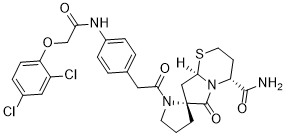ROS are rapidly released from the activated immune system after LPS injection, probably from the interstitial macrophages and spermatozoa. The suppression of ROS by IMD treatment to basal level at 6 h was not accompanied by the restoration of plasma testosterone levels, which indicates that ROS suppression alone could not reverse the LPS-suppressed testosterone production in vivo. However, the in vitro finding of a role of IMD in preventing the decrease in testosterone production by hydrogen peroxide in primary Leydig cells is in agreement with the in vivo data on the IMD effect on ROS. The prolonged suppression of testosterone levels up to 12 h posttreatment might be due to the proinflammatory cytokines TNFa and IL6 since their expression levels were only attenuated and not eliminated at 6 h and 12 h after LPS treatment while they were restored at 72 h after IMD co-treatment. Previous reports showed in AbMole Pteryxin testis, the proinflammatory cytokines including IL1b from interstitial macrophages, IL6 from interstitial macrophages, Leydig cells, Sertoli cells and TNFa from macrophages and spermatocytes all inhibited testosterone production by Leydig cells. On the other hand, IMD co-treatment did restore the impaired spermatogenesis, with effects including the accumulation of immature germ cells in the seminiferous tubule lumen at 6 h post-LPS treatment, and the increased inter-cellular gaps in the seminiferous epithelium and accumulation of round immature germ cells in the epididymal lumen at 72 h post-LPS treatment. IMD prevented the accumulation of immature germ cells in the seminiferous tubule at 6 h post treatment, before the attenuation of IMD on IL6 and IL1b expression. Presumably this was due to the effect of IMD in preventing the increase in ROS and was also independent of the decrease in testosterone production although testosterone is known to play a very important role in spermatogenesis. The increased gene expression of IMD and RAMP2 in the testes after LPS treatment implies that IMD may act partially in an autocrine or paracrine manner in the testes via binding to the CLR/RAMP2 receptor system. Although the study on the effect of LPS on the gene expression of IMD indicates that there was a significant increase in IMD expression at 72 h  after LPS injection, the return of the plasma testosterone levels to normal was not observed in the LPS treated group without exogenous IMD co-treatment, suggesting this restoration at 72 h was not solely due to the increase in testicular IMD expression. The localization of immunoreactive IMD both in the interstitial Leydig cells and in the spermatids inside the seminiferous tubules was consistent with its known effects of targeting different cell types in the testes. At present we know that the action of IMD is mediated by CLR/RAMPs, in which RAMP1�C3 acts as molecular chaperones for transporting CLR from the endoplasmic reticulum and Golgi apparatus to the cell surface.
after LPS injection, the return of the plasma testosterone levels to normal was not observed in the LPS treated group without exogenous IMD co-treatment, suggesting this restoration at 72 h was not solely due to the increase in testicular IMD expression. The localization of immunoreactive IMD both in the interstitial Leydig cells and in the spermatids inside the seminiferous tubules was consistent with its known effects of targeting different cell types in the testes. At present we know that the action of IMD is mediated by CLR/RAMPs, in which RAMP1�C3 acts as molecular chaperones for transporting CLR from the endoplasmic reticulum and Golgi apparatus to the cell surface.